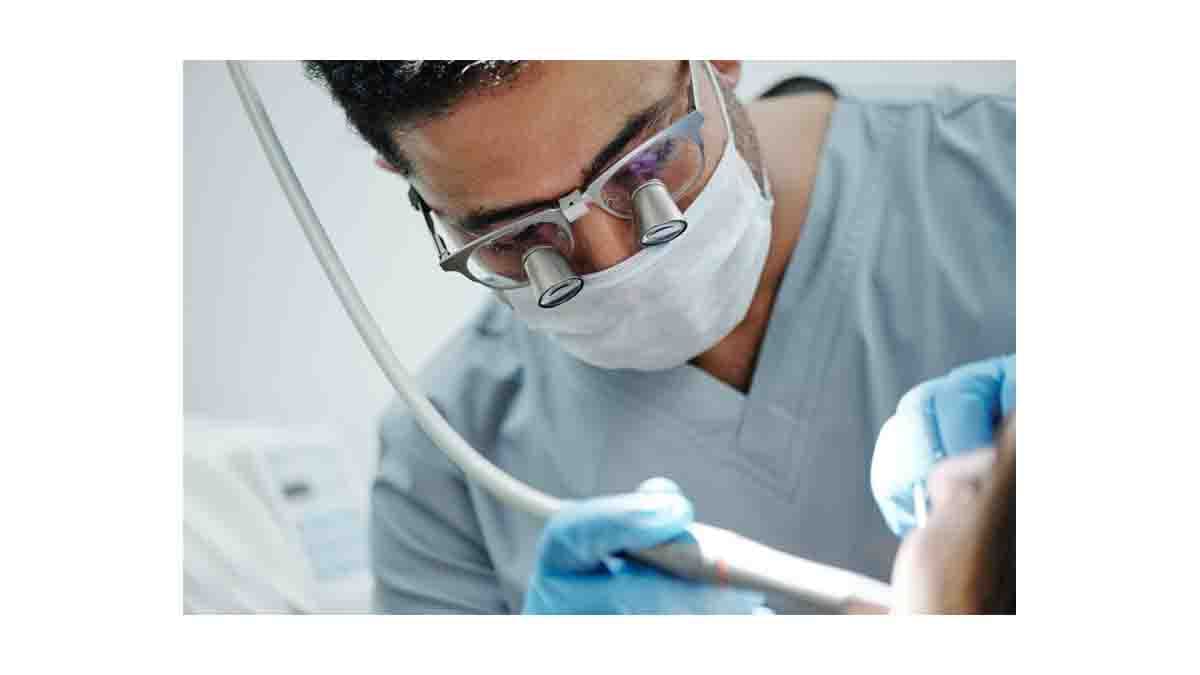Are you interested in promoting healthy skin? Do you want to become a Dermatologist?
You may be a good candidate for a career in dermatology if you want to diagnose and treat skin issues while also helping your patients feel and look their best in your dermatology practice.
To learn more about what a dermatologist does, how you may become one, and if a career in dermatology is suited for you, continue reading.
What is a Dermatologist?
Dermatologists are doctors who specialize in skin illnesses and have received specialized training in the diagnosis and treatment of these conditions.
Treatment of skin, nail, and mucous membrane problems is another area of expertise for them. They also help their patients improve their complexion as part of their work.
More so, skin cancer is one of the more dangerous skin illnesses they specialize in treating. They also boost the self-esteem and sense of community among those affected by disfigurement.
For example, a dermatologist may have a particular area of expertise. Depending on their specialty, dermatologists can specialize in cosmetic dermatology, pediatric dermatology, or dermatopathology.
How long does it take to become a dermatologist?
After high school, it takes 12 years of education and training to become a licensed Dermatologist in the United States of America. Included in this are:
- Four years in the University
- Four years of medical school
- One year of internship
- Three years of residency
- 1+ years of fellowship training may be chosen as an alternative.
Specializations of a Dermatologist:
According to the Florida Medical Clinic, Dermatology is a medical specialty that deals with skin, nail, and hair problems and disorders.
Dermatologists can specialize in a variety of areas, including but not limited to:
- Skin disorders that affect children are the specialty of pediatric dermatologists.
- Cosmetic dermatologists are dermatologists who specialize in improving the skin’s appearance.
- Dermatopathology: A dermatologist who uses a microscope to examine skin disorders.
- A dermatologist that specializes in surgical dermatology is known as a procedure dermatologist.
Do you want to find out? How Do TV Shows Make Money (Full details)
What is a Dermatologist’s Job Duties?
Medical specialists in dermatology treat skin, hair, nail, and mucosal conditions in adults and children.
Among the many conditions, they treat include acne, bacterial infections, genetic diseases, skin cancer, scars from burns, tattoo removal, and aging.
Dermatologists, as specialists in skin diseases, have particular responsibilities. A lot of this depends on the patient’s health they’re working with. Additionally, dermatologists use what they call “black light” to do physical examinations regularly.
They can conduct several minor surgical treatments, such as excisions, Moh’s surgery, and the removal of skin cancer from sensitive areas like the face with minimal scarring and physical damage.
Dermatologists can also perform vitiligo surgery or skin grafting on patients with large scars or those who have suffered burns.
Similarly, some dermatologists serve as lecturers in the medical schools where they give teaching and preventative care for skin and other health-related disorders.
Step by Step Guide on how to become a Dermatologist:
Step 1: Earn a bachelor’s degree by attending a university for four years:
Few medical professions are as competitive as dermatology, which necessitates a significant amount of education and training.
Pre-med courses in biology, organic chemistry, physics, and general chemistry are required for an undergraduate degree.
Depending on the medical school they intend to attend, some applicants must also take an arithmetic and biochemistry curriculum.
Step 2: Take the Medical College Admissions Test (MCAT):
All US medical schools require the Medical College Admissions Test (MCAT). The MCAT is a computer-based test that lasts for eight hours.
To be taken seriously as a candidate for medical school, you must do well on this exam. A predefined MCAT score is used by many universities to automatically select and reject applications if they don’t meet predetermined criteria.
Step 3: Enroll in a Medical School
After completing their undergraduate studies, prospective dermatologists must then attend a four-year approved medical school.
Medical school admission is exceedingly tough; hence an excellent undergraduate GPA is required. After entering medical school, it is imperative to maintain a high level of academic achievement.
Step 4: During Medical School, Pass the First and Second Portions of the USMLE:
To be accepted into a dermatology residency program, students must achieve a high score on the USMLE (United States Medical Licensing Examination).
Part one of the USMLE is taken after the second year of study, and part two is taken just before the final year.
Step 5: Obtaining Residence Status:
After deciding on dermatology as a career path, residency applications are required in medical school. An estimated one-third of dermatology residency applications are rejected, making it one of the most competitive professions in medicine.
After medical school, you’ll begin your residency by being matched with a program. To complete a dermatology residency, one must first complete an internship in either general surgery or internal medicine.
Step 6: Pass USMLE Part 3:
To practice medicine in the United States, you must pass the last portion of this exam at the end of your residency.
Step 7: Apply for a license:
If you want to practice medicine, you need to get a valid license from your state.
Step 8: Consider Board Certification and Fellowship:
A one or two-year fellowship in a subspecialty such as cosmetic surgery, laser medicine, dermatopathology, phototherapy, immunodermatology, or Mohs micrographic surgery may be pursued by dermatologists who have completed their residency and wish to become “board-certified.”
Step 9: Career opportunities with experience should be considered:
A career in academia or research can help dermatologists gain more authority and responsibility in their specialty.
Research funding, publication in scientific publications, and presentations at professional conferences are just some of the additional obligations of these professions.
As a final point, dermatologists can enhance their professional prospects and income by acquiring more surgical training and subspecialty certification, allowing them to do more complex specialty operations.
Read more: 51+ MBA without Work Experience in Canada, UK, Singapore, US | 2023
Major Skills a Dermatologist Needs:
If you have the following abilities, you might want to seek a career in dermatology:
- Attention to detail: Dermatologists must have a keen eye for the smallest changes in a patient’s skin condition to diagnose and treat them accurately.
- Dermatologists must be able to interact with their patients to diagnose and treat them effectively. Their communication skill, both verbal and written, must be impeccable.
- Working with hundreds of patients each month necessitates exceptional organizational and record-keeping skills on the part of a dermatologist.
- Ability to solve problems: Dermatologists must be able to solve problems to find appropriate treatments for skin disorders.
- Dermatologists must have an encyclopedic memory to retain and detect the signs of the thousands of health disorders that might show on hair, nails, and skin.
- Dermatologists need to have a sense of satisfaction in helping their patients look their best.
How Much Money Do You Need to Become a Dermatologist?
The price of a dermatology degree varies from one school to the next. Attending dermatology school costs anywhere from $35,218 to $59,339.
An out-of-state dermatology student can expect to pay up to $400 000 over eight years. It all depends on where you go to school. An out-of-state resident may pay $281,704.
A typical annual salary for a resident throughout residency training is between $40,000 and $50,000.
Medical residents cannot generate any revenue for a medical facility on their own because they are not fully licensed to practice medicine. As a result, they are paid a minimal salary.
What Does Dermatologists Salary Cap Look Like?
Dermatologists in the United States make an average annual salary of $308,000, placing them in the top third of the highest-paying medical specialty, according to Medscape’s 2014 Dermatologist Compensation report.
The highest-paid workers are concentrated in the Southwest and Northwest, where they can expect to make up to $385,000 annually on average.
List of the Best Dermatological Medical Schools
- Johns Hopkins University, School of Medicine
- Harvard University, Harvard Medical School
- Stanford University School of Medicine
- The University of Washington, School of Medicine
- The University of California, San Francisco, School of Medicine
Read more: Dismissed from Medical School? (Best tips and Solutions)
Frequently Asked Questions (FAQs) on Becoming a Dermatologist
Dermatologists are medical doctors who focus on treating issues related to the skin, hair, and nails. Board-certified dermatologists are the go-to medical professionals for anything having to do with your skin, hair, or nails, from acne to psoriasis to melanoma.
A dermatologist is a doctor for cosmetic skin problems. Symptoms could include graying hair, age spots, or sagging skin. In addition to medical care, many dermatologists are qualified to provide cosmetic procedures. Fillers, chemical peels, and laser hair removal are all examples.
It’s likely that you have oily skin if it’s reflective in every direction. You probably have dry skin if it is tight, flaking, or scaly. You have combination skin if oil production is concentrated in just your T-zone. You have normal skin if it is well-hydrated and comfortable, yet not oily.
It may be caused by a combination of factors, including genetics, hormones, illness, or just the passage of time. Hair loss on the scalp is frequent among men but can happen to anyone. An excessive amount of hair falling out from the scalp is the most common definition of baldness. The most common reason for baldness is a family history of early hair loss or balding as a result of advanced age.
Conclusion:
Most dermatologists work in private practices or outpatient clinics; however, a small percentage work in hospitals or academia.
Dermatologists are a special breed of medical professionals who don’t have to stand for lengthy periods and can thus operate in more conducive conditions to their health.
Your work will enrich your patients’ lives as a dermatologist because the skin is the most visible organ that affects health, well-being, and self-esteem.
Awesome one, I hope this article answered your question.
Share this Information.
Editor’s Recommendations:
- Top 5 Best Medical Schools in New Jersey | 2023
- Dentistry in Spain (Top Dental Schools, Dental Programs, Career) 2023
- Top 10 Best Medical schools in Ukraine | 2023
- Top 10 Medical schools in Ghana | 2023
- Top 10 Medical Schools in Cuba | 2023
- Top 5 Easiest Dental Schools to get into in 2023
- Top 10 Medical schools in France | 2023




